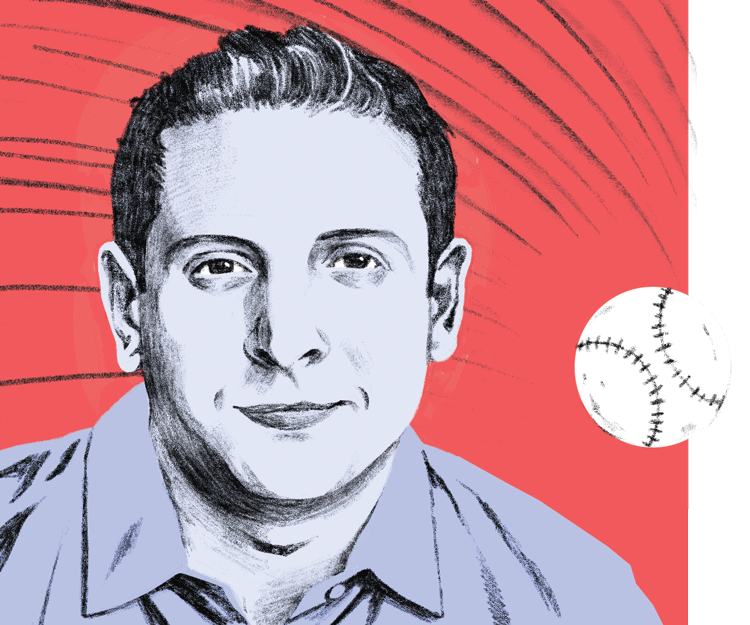We’d be remiss if we didn’t mention that Columbia Magazine is credited on the first page as the book’s inspiration.
That’s where it all began! Four or five years ago, my wife noticed a blurb in the magazine about two neuroscientists, Jason Sherwin and Jordan Muraskin ’15SEAS, who were starting a company that would work with Major League Baseball teams to assess hitting from a decision-making standpoint — analyzing how hitters identify pitches and decide whether to swing or not swing. I’d been looking for a story I could sink my teeth into, and this one really jumped out at me.
Why did the story grab you?
Well, I was interested in the idea that neuroscientists were beginning to work their way into sports. I knew about sports psychology and mindfulness training, but the idea of looking at neural activity to study how players think and make decisions seemed like a new wave in the evolution of sports science. I was also interested in what their company, deCervo, was offering the teams. It wasn’t promising to make their players better or enhance their training, which tends to be the approach of most sports-science companies. It had an evaluative technique. So, essentially, it was promising to give teams data about these hitters — new data that they’d never had access to before. And the teams would then have to decide what to do with it.
Most sports involve some kind of split-second decision-making. Why do you think this kind of research has been focused on baseball in particular?
Hitting a baseball is one of the most difficult things to do in sports, and proficiency doesn’t seem to correlate much with physical characteristics. If you look at the two front-runners for Most Valuable Player in the American League in 2017, for example, one was five feet, six inches and 165 pounds; the other was six feet, seven inches and 282 pounds. So it’s not about muscle mass — it’s not even about vision. It’s a skill that’s much more determined by the neural signals that control movement, which makes it perfect for this kind of investigation.
You toggle back and forth between profiling deCervo and profiling research scientists working to further the study of motion. What’s the relationship between business and academia in this field?
I think there’s a big divide between what takes place in the laboratory and what is actually useful for teams, franchises, and players on the field.
What do you mean?
One of the researchers that I profile in the book, John Krakauer ’92PS — a neuroscientist at Johns Hopkins — told me that motor researchers have mostly been limited to data from people who volunteer for studies. That generally means eighteen-to-twenty-year-old white college students. In order for us to come out with research that can actually help us get to the next level, it would behoove researchers to look at the kinds of great athletes that Sherwin and Muraskin were able to get access to through their company. I write early in the book about the fact that Babe Ruth went to Columbia in 1921 for a series of psychological experiments, which is probably the last case of a world-class, name-brand athlete going to a laboratory to be a guinea pig in anything related to the mental side of athletics. The fact that something like that hasn’t happened in nearly a century is pretty alarming.
You’ve spent most of your career writing about sports and business, but this book is also obviously a deep dive into neuroscience. Do you have any background in that field?
Definitely not. The last science class I took was AP biology in high school. So most of this was new for me, and it was hard work. But it also changed my perspective on sports in a fascinating way. Even as a sportswriter and lifelong sports fan, I hadn’t understood that the movements we make on an everyday basis are so complex and intricate. Learning the science behind them made me appreciate what these great performers are doing on the court or on the field.



